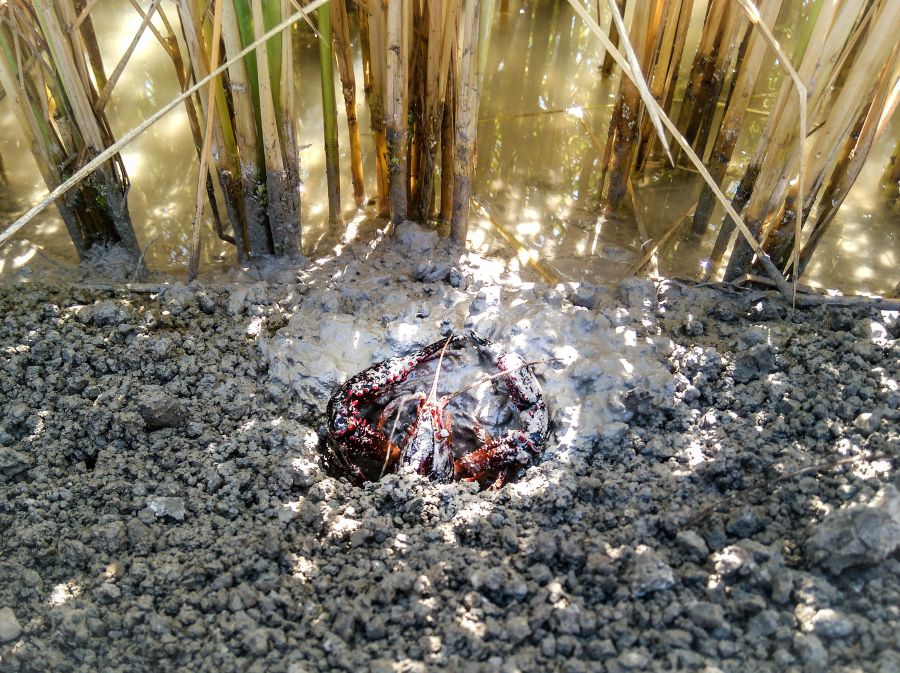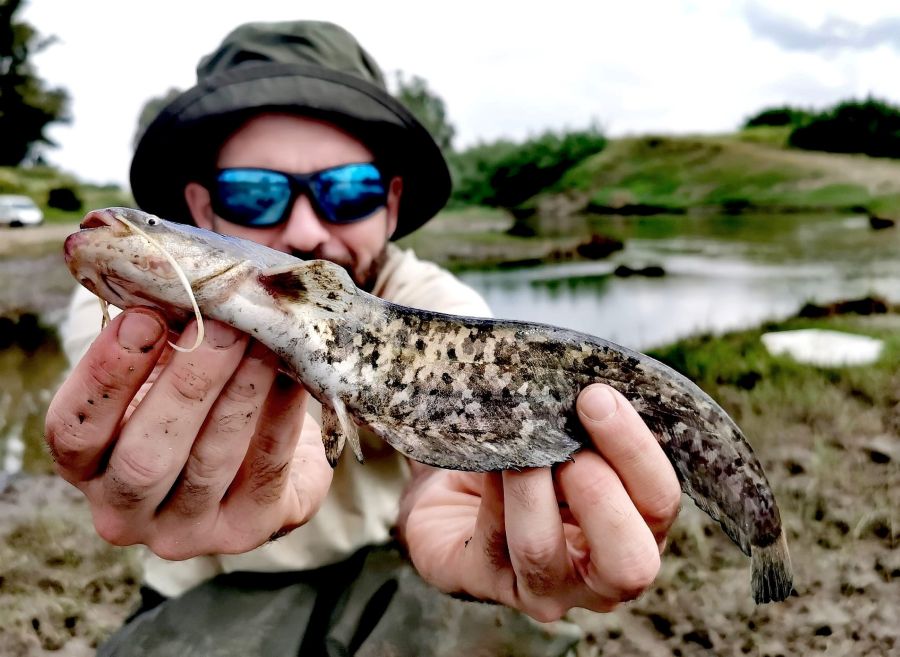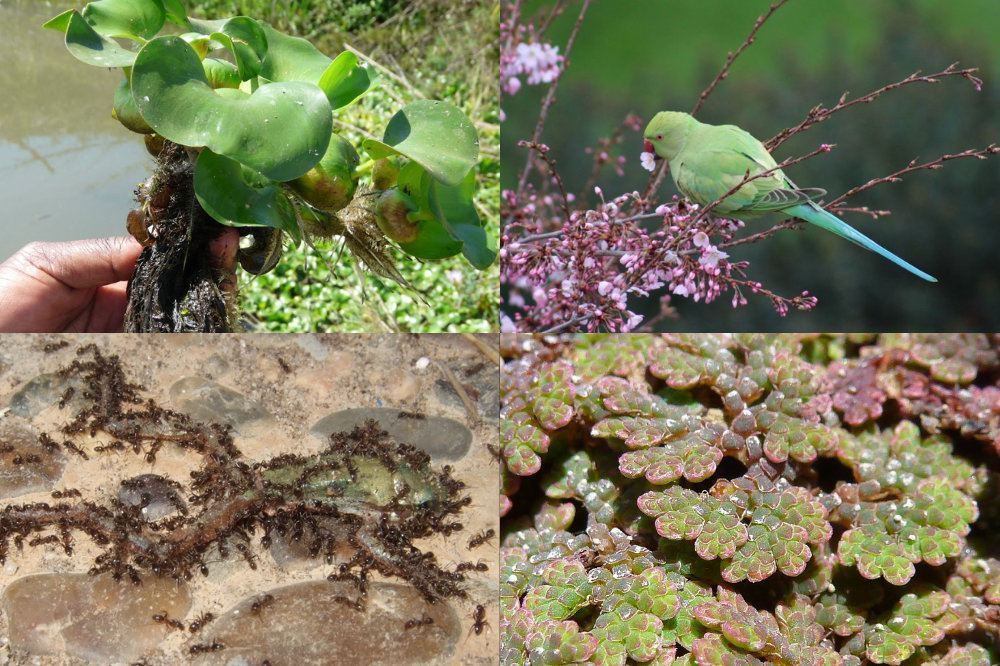Over 1,200 non-native species are established in the Iberian Peninsula

The red swamp crayfish (Procambarus clarkii) was first introduced to the Iberian Peninsula in 1973. Photo: Francisco J. Oficialdegui
The Iberian Peninsula is home to more than 1,200 established non-native species—those that, once introduced, are able to reproduce and maintain populations without human assistance. This is the main finding of a study published in Diversity and Distributions, which warns that the arrival and spread of non-native species are reshaping local ecosystems and threatening Iberia’s native biodiversity.
The research, led by Dr. Ismael Soto of the University of South Bohemia in České Budějovice, Czech Republic, involved scientific teams from Spain, Portugal, and Andorra. Notable among them is the contribution of researchers from the Doñana Biological Station, including Francisco J. Oficialdegui, Sergio Bedmar, Elena Angulo, and Margarita Florencio.
The team analyzed the taxonomy and spatiotemporal variation of non-native species across the peninsula. In total, 1,273 established species were identified, 75% of which are vascular plants and insects. Most originate from the Palearctic region—Europe, temperate Asia, and North Africa—followed by North and South America. “The main pathway for these introductions stems from escapes from gardens and nurseries, largely driven by the trade of ornamental plants and horticulture,” explains Dr. Soto.
Greater concentration in coastal and urban areas
In Spain, the highest concentration of first records of non-native species is found in coastal and urban areas, especially in Catalonia, the Valencian Community, and Andalusia. This pattern, particularly near major cities and capitals, reflects their close link to human activity—namely urban gardening and the intense transport dynamics of seaports.
Many of these species are considered invasive, representing one of the greatest threats to biodiversity and a leading cause of species extinctions. The study highlights key impacts such as disruption of food webs, competition with native species for resources, disease transmission, and habitat alteration.
As a result, invasive species are driving irreversible changes in Iberian ecosystems, affecting native flora and fauna. One example is the red swamp crayfish (Procambarus clarkii), first introduced in 1973 and quickly spread to numerous river basins and wetlands. “This invasive crustacean is causing severe ecological damage to many native aquatic taxa, along with major socioeconomic consequences,” notes researcher Francisco J. Oficialdegui.

Sergio Bedmar with a juvenile wels catfish caught during one of his surveys, evidence that the species is established and reproducing. Photo: Miguel Clavero
Another striking case in aquatic ecosystems is the wels catfish (Silurus glanis). “Its large size and abundant populations mean that virtually no other species escapes predation. At the same time, its appeal as a trophy for recreational fishing was the main driver of its introduction and spread across the peninsula,” adds researcher Sergio Bedmar.
Among invasive species in Spain, ants stand out due to the number of non-native species recorded. Researcher Elena Angulo stresses the need for stricter monitoring of entry points and nurseries, which serve as hubs for their spread. “The Argentine ant is already widespread in most major cities and coastal towns, causing severe ecosystem impacts while being extremely costly to manage. We must prevent the arrival of other species, such as the red imported fire ant, which is already close by in Italy,” she warns.
Invasive plants also pose a major threat to biodiversity. For example, the floating fern Azolla filiculoides has become particularly concerning. “This species can degrade water quality, creating anoxic conditions that endanger native aquatic plants and animals,” says researcher Margarita Florencio. Similarly, the water hyacinth, native to South America, ranks among the world’s 100 most invasive species due to the extensive damage it causes to aquatic ecosystems.

From left to right, top to bottom: water hyacinth, monk parakeet, Argentine ant, and the fern Azolla filiculoides. EBD-CSIC
Public awareness and integrated, science-based management
Oficialdegui underscores the importance of an integrated approach to management and prevention, including continuous monitoring, control of already established species, and restoration of degraded habitats. “To safeguard Iberian biodiversity, it is essential to combine scientific knowledge with effective policies and active public engagement,” he emphasizes.
The study also highlights the need to raise public awareness of the risks associated with non-native species and to promote preventive measures in sectors such as aquaculture, recreational fishing, the pet trade, and horticulture.
Together, these findings underscore the urgent need to strengthen conservation policies and adopt coordinated strategies involving the scientific community, environmental managers, and the public in order to mitigate the impacts of biological invasions and protect the extraordinary biodiversity and endemic species of the Iberian Peninsula.
Reference
Soto, I., Oficialdegui, F. J., Bedmar, S., Capinha, C., Sousa, R., García-Berthou, E., Muniz, C. M., Oscoz, J., Cano-Barbacil, C., Anastácio, P. M., Angulo, E., Arnanz, C., Florencio, M., Kouba, A., Miranda, R., Oliva-Paterna, F. J., Ribeiro, F., López-Pujol, J., Dalmau, M., Pladevall, C., Porto, M., Haubrock, P. J., Briski, E. (2025). Over 1200 Non-Native Species Are Established in the Iberian Peninsula. Diversity and Distributions, 31(8), e70071. https://onlinelibrary.wiley.com/doi/10.1111/ddi.70071